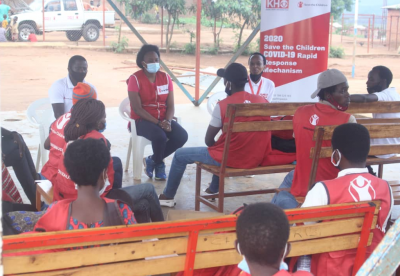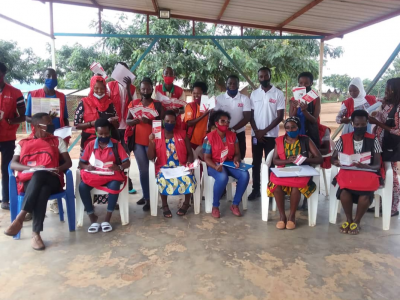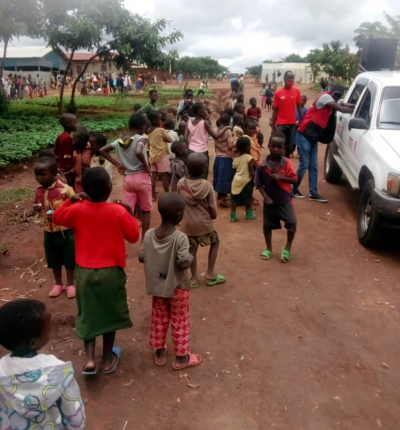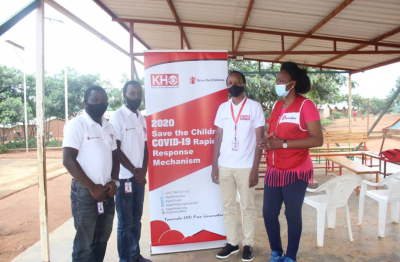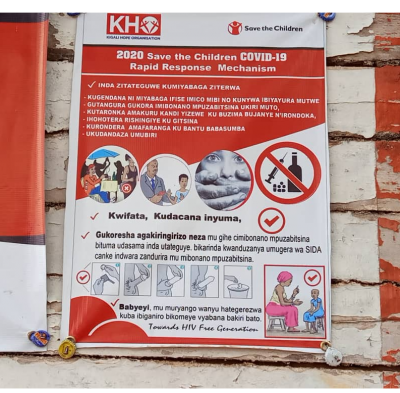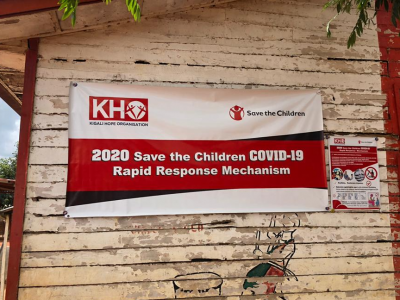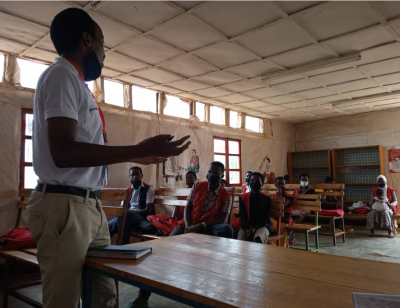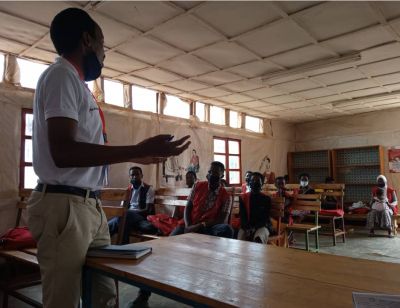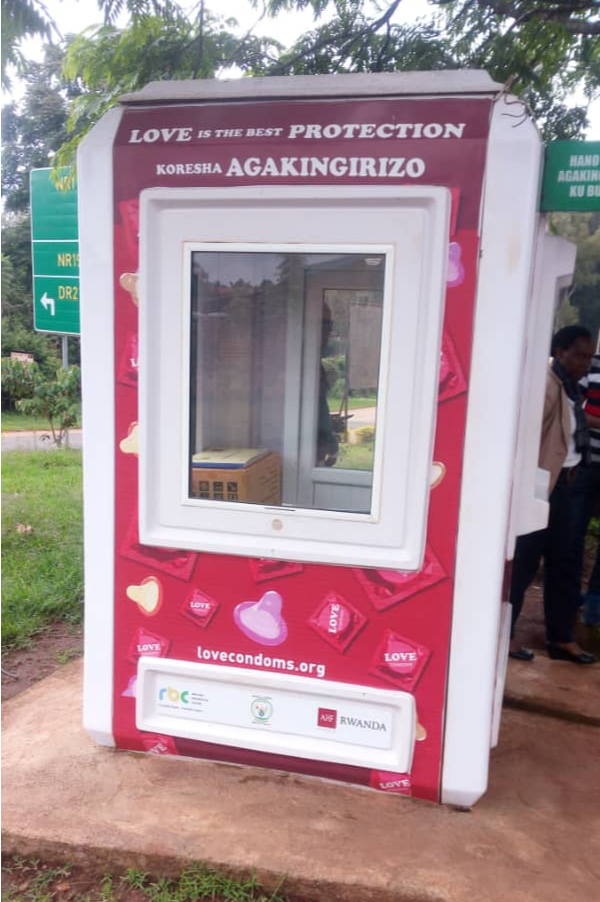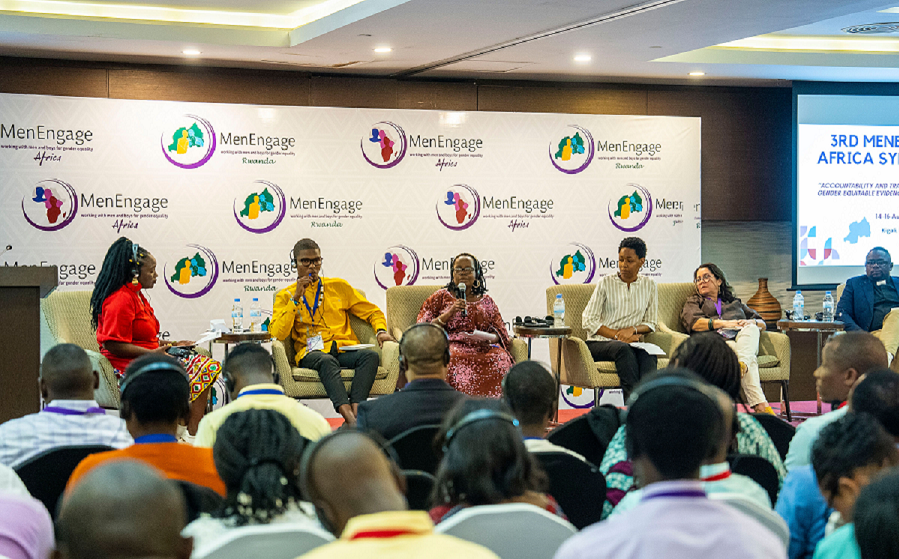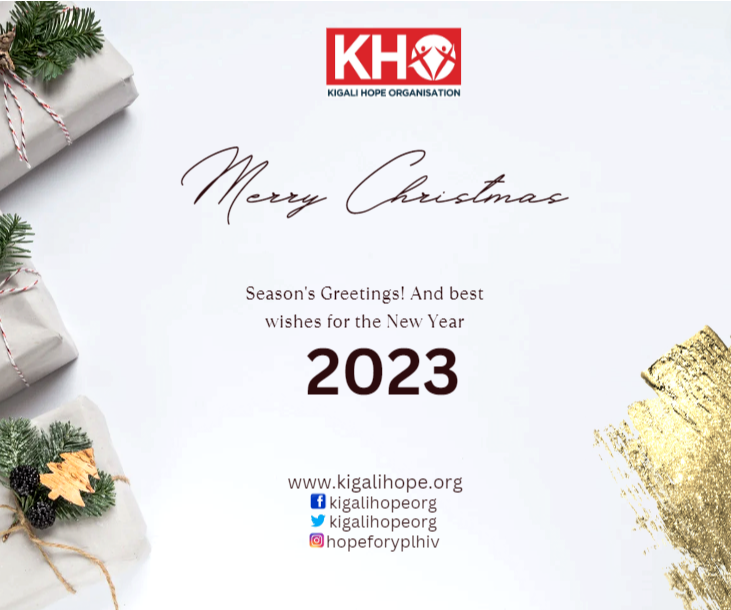
Details
KHO started ASRH project in Kirehe District / Mahama Refugees
camp on 7th September 2020, the end project reporting period is 30th November 2020. The project
was supported by Save the children.
Target population
The project targeted adolescents[MK1] and youth aged between 10 and 24
years old
Project motivation
To enable them access information about sexual reproductive
and health by preventing unwanted pregnancy through tools and messages as in
the period of COVID19, where the camp is
locked down, youth corners closed and some activities like teaching,
entertainment and training are prohibited.
The need for ASRH project for Covid 19 rapid response
Mechanism in Mahama refugees Camp
The total number of refugees in MAHAMA refugees camp were
counted 58,427
on 15th [MK2] November 2020 (UNHCR), and the Quality sexual and reproductive health
services are essential to the wellbeing of refugees and other persons of
concern. It is an important part of all humanitarian responses.
Due to COVID 19 period, all activities gathers youth in the
camp were stopped and there must be quick responses to continue fight with
unwanted pregnancy and unsafe sex among adolescents, this is where KHO came up
and takeover of period of two months.
Furthermore, adolescents and
young people are faced with barriers that stem from ignorance, poverty, social
norms, as well as age restrictions on access to sexual and reproductive health
services.
All adolescents deserve high
quality health care services that are devoid of criticism or unwelcoming
attitudes that will keep them away as well as accessible to them.[MK3]
- PROJECT ACTIVITIES
The ASRH COVID 19 rapid response Mechanism’s activities was
divided into three main activities; including:
-
free
distribution of Agaciro Kanjye booklet,
-
distribution
of brochures and posters; and
-
mass
mobilization using Sono mobile (a moving vehicle with installed sound system)
to spread ASRH message and Awareness raising throughout the camp. These
activities have been done in one part of the camp (MAHAMA2) where SAVE The
CHILDREN is responsible. A part of distribution activities, the implementation
of activities related to the mass campaign with the sono mobile vehicle took a
30 days period with 8 hours per day of the week.
- PROJECT ACHIEVEMENTS[MK4] [MK5]
- Free
distribution of Agaciro kanjye booklet
KHO distributed 356 booklets in different camp villages using
community volunteers.
Agaciro Kanjye Booklet contain ASRH information such as
reproduction, Female period and pregnancy, contraceptive methods, HIV transmission
and preventions as well as male and female condom demonstration, VCT, PMTCT,
STIs, stigma and discrimination, peer education and values.
Prior to this project, youths in MAHAMA2 accessed ASRH
information through discussion with Save the children’s peer education where
Agaciro Kanjye booklet was only holded by peer educators.
But now 356 youths got Agaciro kanjye booklets, now it’s
easy to access ASRH information and
possibly having discussions among them as well as discussions with their
parents.
- Distribution of Brochures and Posters.
Researches show that visual materials constitute 90% of brain
stimuli and visual memory constitutes two-third of the brain, so as the
assimilation of knowledge as a key to the success of the education system. The
most important teaching material that enriches visually the learning of the
environment is the posters and brochures.
KHO spreads 50 posters containing ASRH information and 259
brochures in MAHAMA 2. The activity is done by the KHO team and volunteers.
THE BROCHURES:
These brochures contain ASRH information such as
reproduction, female period, unwanted pregnancy prevention, contraceptive
methods, HIV transmission and prevention by using Condom. All ASRH information
here is in KIRUNDI language.
Now 259 youths in MAHAMA2 got brochures in Kirundi language
that will enable them to have a clear discussion among them in groups, family
as well as share with parents and it
will become a solution for new KINYARWANDA’s learners.
THE POSTERS
The posters with ASRH information and condom demonstration,
distributed to youth’s corners and in health facilities in MAHAMA2, hanged
inside and outside of Trust YFS (youth friendly services), hanged also at camp
healthy facilities at every wall space where patients sit waiting for service.
This will allow a user to receive and think privately about a message, or can
spark group conversation.
- ASRH mass mobilization using Mobile Sono.
The mobile sono is spreading information/messages by using a
vehicle moving in the community. These
activities were composed by loud speakers fixed in a vehicle moving and circulating in the camp's village,
at the market, at checking and food point as well as all places where refugees
gather to access daily life facilities.
The mobile sono provided the
recorded ASRH messages in KIRUNDI language for adolescent, young adults
as well as for parents, the activity was done by the KHO team.
There were also two social mobilizer volunteers who were
animating, sketching, discussing, commenting and responding to the recorded
messages by providing facts and truth with successive examples based on real
life of refugees using microphones in
their mother tongue (Kirundi language).
This activity was more important as the mobile message was
targeting all people in the camp with no one excluded, it also reached to those youths and young adults who miss the
ASRH information and who are always hiding, who have no confidence to come to
the youth corner and those who fear to
ask questions related to sexuality and
reproduction. It also built parent’s ability to talk to their children with
possession of some important key Information.
- KEY RESULT AND
ACHIEVEMENT
distribution
of ASRH materials and mass mobilization using mobile sono and
loudspeakers with messages that
talk about prevention of unwanted pregnancies
was highly successful and at least reached 10,000 young peaple based on planned activities and
achievements.
The
project targeted youths and adolescents
in Mahama Camp aged 10-24 years through awareness raising events with youth living in emergency settings,
distributing brochures and posters with ASRH information, and distributing Agaciro kanjye booklets in the camps.
The
project target was to distribute 350 Agaciro kanjye booklets and now 356 youths
and adolescents have access to ASRH information.
The
project target also was distributing 300
brochures and posters with ASRH information in the camp, and now 250
adolescents access brochures with ASRH information in Kirundi language and 50
posters with ASRH information and condom demonstration was hung
in youth corners and different
sides of the health facility.
All activities
done by the KHO team together with 25 volunteers and young people trained by
Save the Children. These volunteers are from the camp and will continue to
serve their community even after the end of the project.
- CHANGE IN RELATION TO THE PLAN
The
number of materials distributed changed slightly mostly because of the supplier
of the materials.
350
Agaciro Kanjye booklets planned; 356 agaciro kanjye distributed
300 ASRH
brochures (250) and posters (50) planned; 309 brochures distributed (259brochures)
- ADDED VALUE OF THE
PARTNERSHIP
Our
organization was more empowered especially in terms of project implementation
in emergency settings (refugees camp). Moreover, Save the Children gave us the
materials (Computers and printer) and other software (quickbook) and website.
This will help the organization to improve its reporting system and the
visibility of the organization on line. We are thankful that Save the Children
considered our organization and acknowledge that the support received will
prevail even after the end of the project.
- MAIN CHALLENGES
AND LESSON LEARNED
Challenges
First of
all in project implementation we faced the challenges of numbers of children
who run after the car circulating in
villages using Sono for spreading ASRH
messages, some children used to
lay down in front of the car
while moving, some children tried to remove tyres air while the car was
parked...
To
overcome this challenge by respecting child protection we had security and volunteers who moved
around the car by moving aside children in a friendly way, to prevent any
harmful or accident while the car is moving.
The
second challenge was the unexpected rain,
which could stop activity for a while, when it rained, all people moved
to their shelters, no one could hear messages. KHO team and volunteers were
forced to extend working hours to compensate for unused time while it was
raining.
The lesson learned
In
project implementation, things may change, unexpected things may happen, and
the environment may sometimes not be fair .
●
To be successful, you must address
social challenges that create additional barriers to success for vulnerables
children
Partners
working with young people need to have counseling experience and psychosocial
experience to provide critical support, create a nurturing and safe
environment, and link youth to existing area services and support structure,
finally any organization working with youth under 18 needs to adopt a child
protection policy. As we were implementing the project, the trained team of
volunteers helped a lot in order to get the real results
●
Adopt a comprehensive approach to
respond to changes
You need to
offer more than a familiar teaching way. Adolescents enjoyed the idea of
putting brochures in their language, this showed that in project planning
organizations need to scan environments, see the gap, come with innovation and
be flexible and find the best way to
reach to beneficiaries .[MK6]
●
We also experiencing the role of
partnership by working with Save the children organization to:
-Understand
motivations and objectives
-Build
trust
-understand
partner's language
-Develop
clear agreement and be flexible
-View
partnerships as a mindset not a formula
|
Direct
beneficiaries have reached through project interventions? |
|
1. Distribution of
ASRH materials Boys (10-14):
83 Girls (10-14):
146 BOYS (15-24):
191 Girls (15-24 ):
195 Total of beneficiaries reached 615 2. Mass
mobilization campaign with Sono mobile with a moving vehicle throughout the
camp: at least 10,000 people reached |
- CONCLUSION
ASRH
activities in Mahama camp were more than100% successful based on planned
activities and achievements.
And we
can tell that the partnership with Save the Children improved our abilities in
project implementation as a local NGO.
We also
acknowledge the valuable good collaboration support of MINEMA (Ministry in
charge of Emergency Management in Rwanda) Especially the team working in Mahama
Refugees camp.
KHO is
now empowered and ready for future opportunities either inside any refugees’
camp of in the supporting community outside the camp
Finally,
we would like to thank the Save the Children team for their guidance and
support before and during the implementation of the project.
Short survey
Kigali
Hope Organization conducted a short survey, the purpose was to test how
effectiveness the ASRH information provided was for the target beneficiaries,
see the gap and users comments for future decision making. We created a short survey questionnaire which
acted like a short test to show evidence of activities' impact, and show the
proposed solutions from beneficiaries. The survey was written in English and Kirundi languages and
conducted among 15 young people's volunteers.



